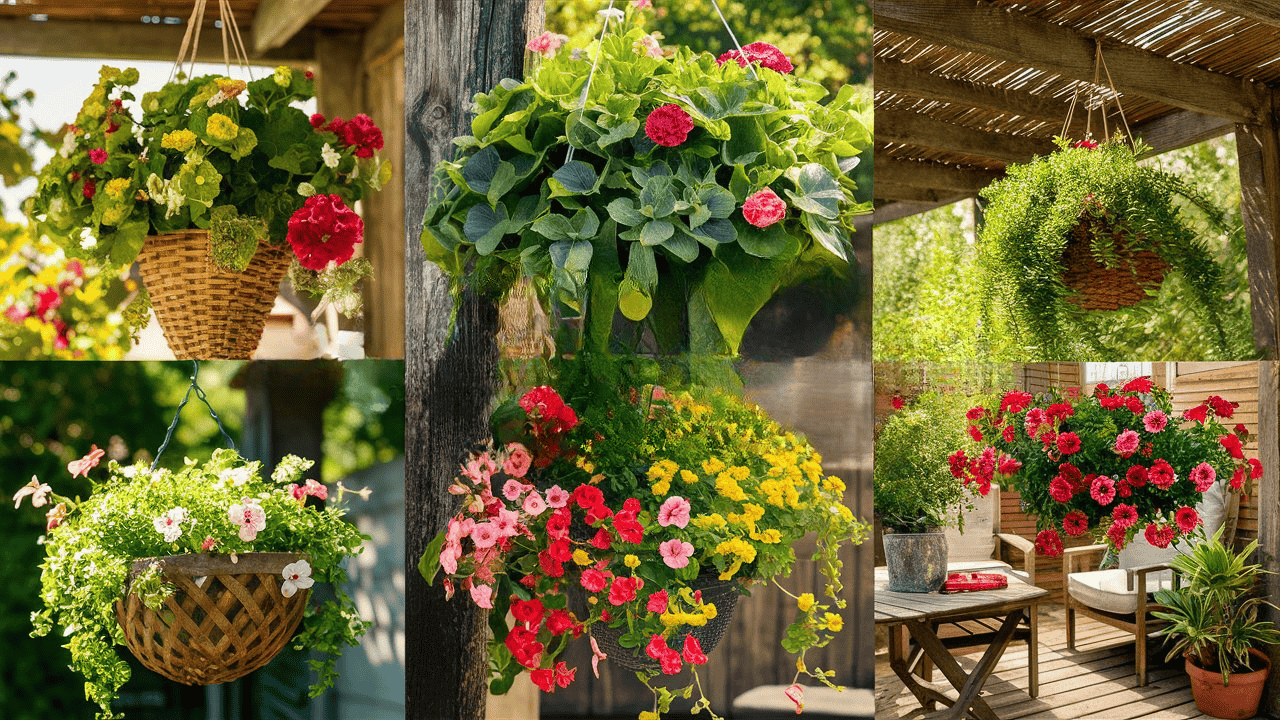Hanging baskets are a beautiful and versatile way to add color, texture, and interest to any outdoor space. Whether you have a porch, balcony, or garden, hanging baskets can transform the area with their cascading vines, vibrant blooms, and lush foliage. When it comes to selecting the perfect plants for hanging baskets, there are many options to choose from. In this blog post, we’ll explore three exceptional choices that are sure to elevate your hanging basket game.
Supertunia Petunias (Petunia hybrid)
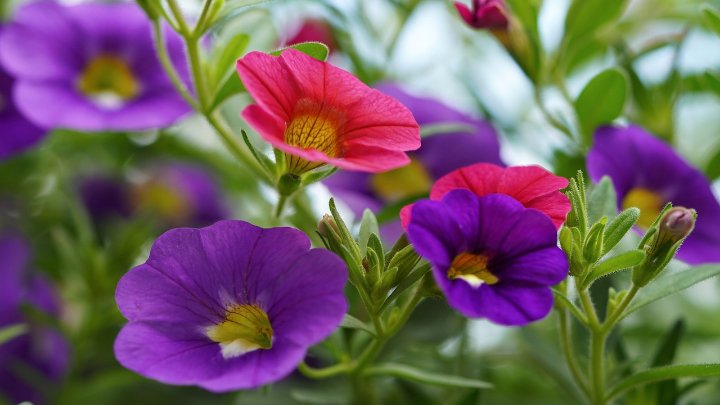
Supertunia petunias are a standout choice for hanging baskets, offering an unparalleled display of color and performance. These hybrid petunias are known for their prolific blooming, trailing habit, and ability to thrive in a variety of conditions. Supertunia petunias come in a wide range of hues, from vibrant reds and pinks to soft pastels and bold purples.
One of the key advantages of Supertunia petunias is their exceptional heat and drought tolerance. These plants can withstand the intense summer sun and occasional periods of neglect, making them a low-maintenance option for busy gardeners. Their cascading growth habit is perfect for spilling over the edges of a hanging basket, creating a lush and eye-catching display.
To ensure the best results with Supertunia petunias, plant them in a well-draining potting mix and provide them with ample sunlight, at least 6 hours per day. Regular deadheading and occasional fertilization will help to keep them looking their best throughout the growing season.
Painted Lady (Echeveria derenbergii)
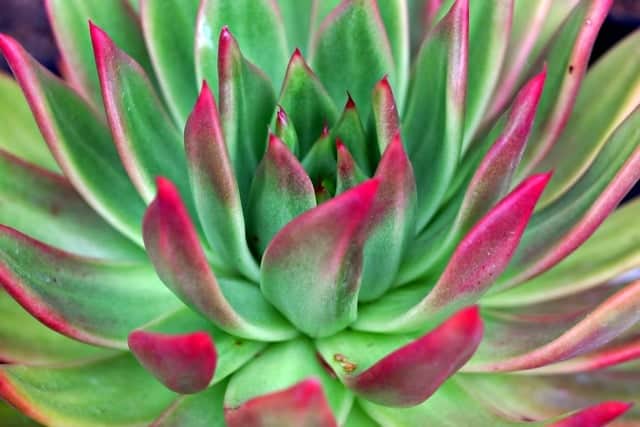
For a touch of architectural interest and succulent charm, the Painted Lady echeveria is an excellent choice for hanging baskets. This stunning succulent boasts rosettes of fleshy, blue-green leaves that are often tipped with a reddish-pink hue, giving it a unique and captivating appearance.
Painted Lady echeverias are incredibly versatile and can thrive in both full sun and partial shade conditions. Their compact growth habit and trailing tendencies make them well-suited for hanging baskets, where they can cascade gracefully over the sides.
One of the key benefits of Painted Lady echeverias is their low-maintenance nature. These succulents require infrequent watering and can tolerate periods of drought, making them an ideal option for gardeners who may not have the time for constant watering. Additionally, their compact size means they can be easily accommodated in smaller hanging baskets.
To care for your Painted Lady echeveria in a hanging basket, be sure to use a well-draining potting mix and provide it with ample sunlight. Avoid overwatering, as this can lead to rot, and instead, allow the soil to dry out slightly between waterings.
Dwarf Lavender (Lavandula angustifolia)
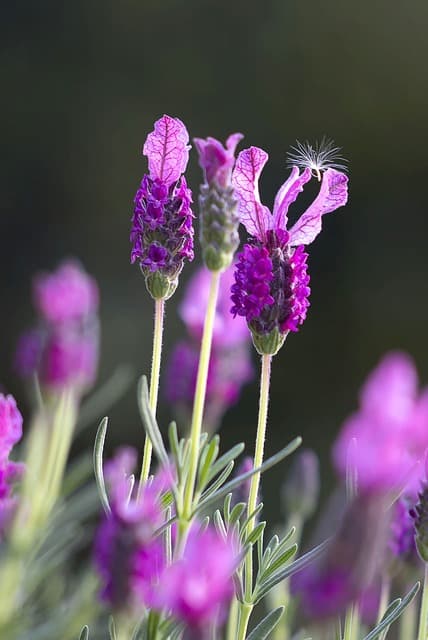
Bringing the soothing scent of the Mediterranean to your outdoor space, dwarf lavender is a captivating choice for hanging baskets. These compact, bushy plants produce an abundance of fragrant, purple flower spikes that dance in the breeze, creating a visually stunning and aromatic display.
Dwarf lavender varieties, such as ‘Hidcote’ and ‘Munstead,’ are particularly well-suited for hanging baskets due to their smaller stature and trailing tendencies. Their silvery-green foliage provides a beautiful contrast to the vibrant blooms, adding depth and texture to the overall composition.
One of the key advantages of dwarf lavender in hanging baskets is its ability to thrive in full sun and well-drained soil. These plants are drought-tolerant and can withstand periods of hot, dry weather, making them a low-maintenance option for busy gardeners.
To care for your dwarf lavender in a hanging basket, be sure to plant it in a high-quality potting mix that is specifically formulated for containers. Provide the plant with at least 6 hours of direct sunlight per day and water it when the soil begins to dry out. Regular deadheading of spent flower spikes will encourage continued blooming throughout the season.
Lobelia (Lobelia erinus)
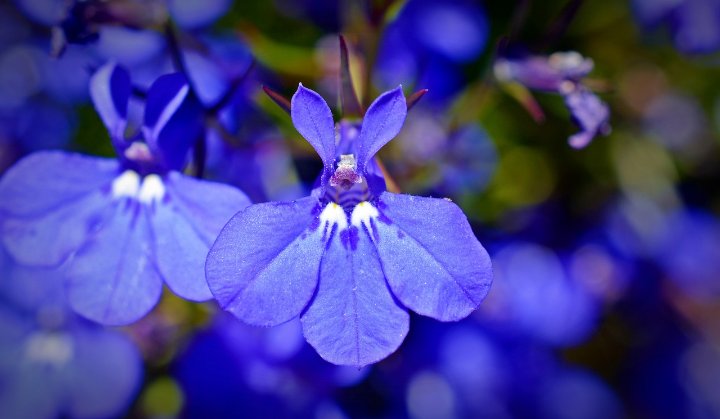
Lobelia is a versatile and eye-catching plant that is well-suited for hanging baskets. These delicate, trailing plants produce an abundance of small, vibrant flowers that cascade over the sides of the basket, creating a stunning visual display.
Lobelia comes in a wide range of colors, including shades of blue, purple, white, and pink, making it easy to find a variety that complements your existing color scheme. The plants’ compact growth habit and trailing tendencies make them an excellent choice for filling the space in a hanging basket, while their delicate, almost feathery foliage adds a touch of softness to the overall composition.
One of the key benefits of lobelia in hanging baskets is its ability to thrive in partial shade. While the plants do prefer full sun, they can also tolerate some shade, making them a versatile option for areas that may not receive direct sunlight throughout the day. Additionally, lobelia is relatively low-maintenance, requiring regular watering and occasional deadheading to maintain its best appearance.
To ensure the success of your lobelia in a hanging basket, be sure to plant it in a well-draining potting mix and provide it with consistent moisture. Avoid letting the soil dry out completely, as this can cause the plants to wilt and potentially decline. Regular fertilization with a balanced, water-soluble formula will also help to keep your lobelia thriving throughout the growing season.
Impatiens (Impatiens walleriana)
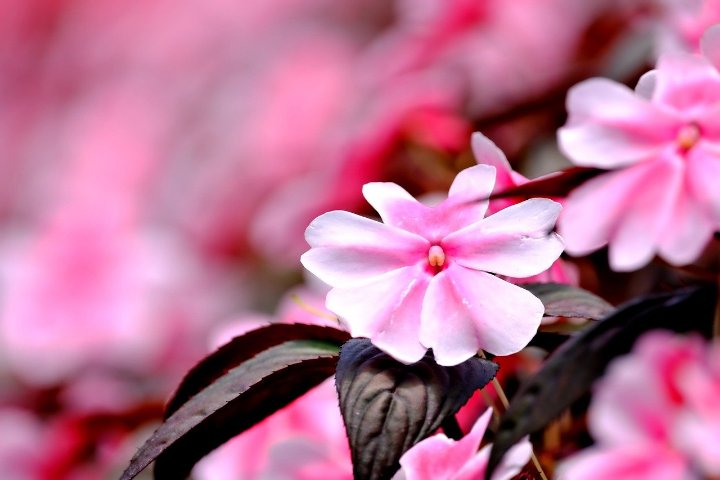
Impatiens, also known as “busy Lizzie,” are a beloved choice for hanging baskets, offering a vibrant and diverse array of color options. These shade-loving plants produce an abundance of delicate, slipper-shaped flowers that come in a wide range of hues, including red, pink, white, and purple.
One of the key advantages of impatiens in hanging baskets is their ability to thrive in partially shaded or even fully shaded areas. This makes them an excellent choice for gardeners who have limited access to direct sunlight, as they can still enjoy the beauty of these plants in their outdoor spaces.
Impatiens are also known for their prolific blooming habit, with flowers that continue to appear throughout the growing season. This ensures that your hanging baskets will maintain their visual appeal for an extended period, providing a long-lasting display of color and interest.
To care for your impatiens in a hanging basket, be sure to plant them in a well-draining potting mix and water them regularly, keeping the soil consistently moist but not waterlogged. Avoid exposing the plants to direct, intense sunlight, as this can cause the leaves to wilt and the flowers to fade prematurely. Regular deadheading of spent blooms will also help to encourage continued flowering.
Burro’s Tail (Sedum morganianum)

For a truly unique and eye-catching addition to your hanging baskets, consider the captivating Burro’s Tail sedum. This succulent plant is known for its long, trailing stems that cascade over the sides of the basket, creating a stunning, cascading effect.
Burro’s Tail is characterized by its thick, fleshy leaves that are arranged in a spiral pattern along the stems. The leaves are a beautiful blue-green color, often with a reddish-purple tint, adding depth and visual interest to the overall display.
One of the key advantages of Burro’s Tail in hanging baskets is its low-maintenance nature. As a succulent, it requires infrequent watering and can tolerate periods of drought, making it an ideal choice for gardeners who may not have the time for constant care.
To ensure the success of your Burro’s Tail in a hanging basket, be sure to plant it in a well-draining potting mix specifically formulated for succulents. Provide the plant with ample sunlight, as it thrives in full sun to partial shade conditions. Avoid overwatering, as this can lead to rot and other issues, and instead, allow the soil to dry out slightly between waterings.
Chrysanthemum (Chrysanthemum spp.)

Chrysanthemums are a classic and versatile choice for hanging baskets, offering a wide range of colors, forms, and bloom times to suit any gardener’s preferences. These vibrant flowers come in a variety of shapes, from the delicate, daisy-like blooms to the bold, pompom-style varieties, making them a visually striking addition to any outdoor space.
One of the key advantages of chrysanthemums in hanging baskets is their ability to thrive in full sun conditions. These plants require at least 6 hours of direct sunlight per day to maintain their best appearance, making them an excellent choice for areas that receive ample light.
When it comes to care, chrysanthemums in hanging baskets require regular watering to keep the soil consistently moist, but not waterlogged. They also benefit from occasional fertilization with a balanced, water-soluble formula to support their growth and flowering. Deadheading spent blooms will encourage the plant to continue producing new flowers throughout the season.
For a stunning display in your hanging baskets, consider incorporating a variety of chrysanthemum types and colors. The contrast between the different bloom shapes and hues can create a visually captivating and harmonious composition.
Spiderwort (Tradescantia spp.)
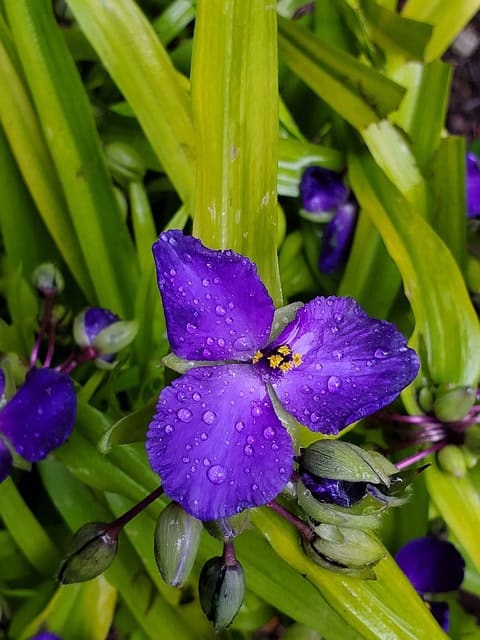
Spiderwort, also known as Wandering Jew, is a versatile and eye-catching plant that thrives in hanging baskets. These trailing plants produce an abundance of delicate, three-petaled flowers in shades of purple, blue, and white, creating a cascading display that is both unique and visually appealing.
One of the key benefits of spiderwort in hanging baskets is its ability to tolerate a wide range of light conditions, from full sun to partial shade. This makes it an excellent choice for gardeners who may have limited access to direct sunlight in their outdoor spaces.
Spiderwort is also known for its resilience and low-maintenance requirements. These plants are relatively drought-tolerant and can bounce back quickly from periods of neglect, making them a great option for busy gardeners or those with limited time for frequent watering and care.
To ensure the success of your spiderwort in a hanging basket, be sure to plant it in a well-draining potting mix and water it regularly, allowing the soil to dry out slightly between waterings. Avoid exposing the plant to intense, direct sunlight, as this can cause the leaves to wilt and the flowers to fade prematurely.
Verbena (Verbena speciosa)
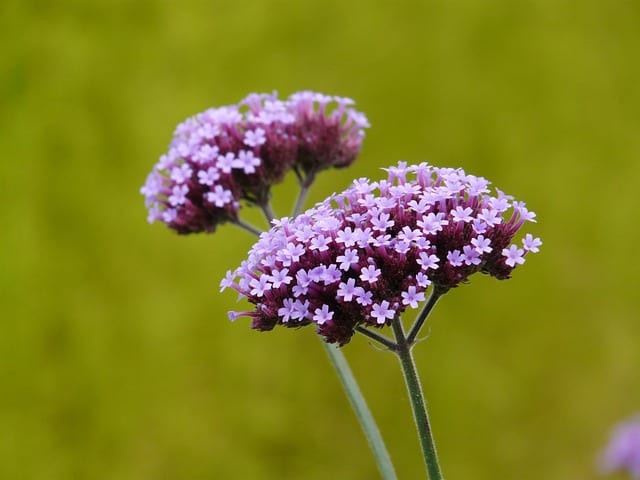
Verbena is a vibrant and versatile plant that is well-suited for hanging baskets, offering a stunning display of color and cascading growth habit. These plants produce clusters of small, trumpet-shaped flowers in a wide range of hues, including shades of pink, purple, red, and white, creating a visually captivating and eye-catching display.
One of the key advantages of verbena in hanging baskets is its ability to thrive in full sun conditions. These plants require at least 6 hours of direct sunlight per day to maintain their best appearance, making them an excellent choice for areas that receive ample light.
Verbena is also known for its heat and drought tolerance, making it a low-maintenance option for gardeners who may not have the time for frequent watering and care. However, it’s important to note that the plants do require consistent moisture to prevent the leaves and flowers from wilting and drooping.
To care for your verbena in a hanging basket, be sure to plant it in a well-draining potting mix and water it regularly, keeping the soil consistently moist but not waterlogged. Deadheading spent blooms will encourage the plant to continue producing new flowers throughout the growing season, ensuring a long-lasting and vibrant display.
Trailing Pansy (Viola x wittrockiana)
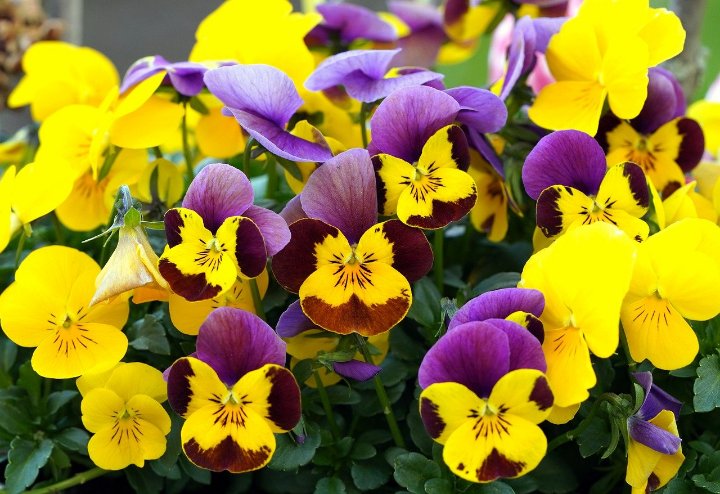
Trailing pansies are a delightful and whimsical choice for hanging baskets, offering a charming display of colorful, face-like blooms that cascade over the sides of the container. These versatile plants come in a wide range of hues, from classic combinations of yellow and purple to more vibrant shades of red, blue, and white.
One of the key advantages of trailing pansies in hanging baskets is their ability to thrive in partial shade to full sun conditions. While they prefer at least 6 hours of direct sunlight per day, these plants can also tolerate some shade, making them a flexible option for gardeners with varying light conditions.
Trailing pansies are also known for their prolific blooming habit, producing an abundance of flowers throughout the growing season. With proper care and deadheading, these plants will continue to display their charming blooms from spring through fall, providing a long-lasting and visually captivating addition to your outdoor space.
To ensure the success of your trailing pansies in a hanging basket, be sure to plant them in a well-draining potting mix and water them regularly, keeping the soil consistently moist but not waterlogged. Occasional fertilization with a balanced, water-soluble formula will also help to support the plants’ growth and flowering.
Bacopa (Bacopa monnieri)
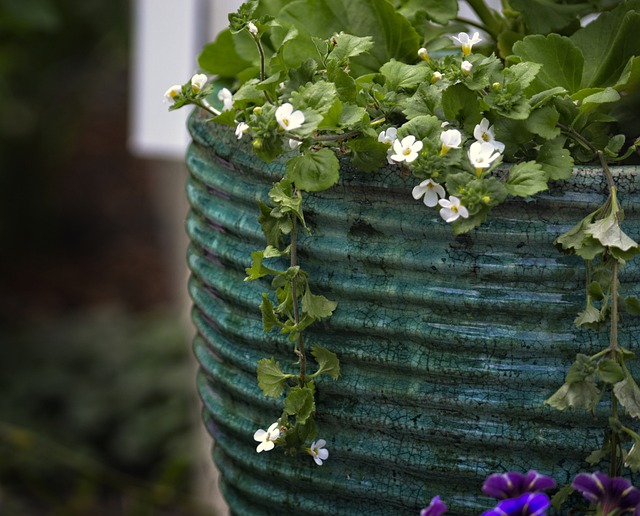
Bacopa, also known as “water hyssop,” is a trailing plant that is well-suited for hanging baskets, offering a cascading display of delicate, white or lavender-colored flowers. These plants are known for their ability to thrive in moist, humid conditions, making them an excellent choice for gardeners who may have shaded or partially shaded areas in their outdoor spaces.
One of the key benefits of bacopa in hanging baskets is its low-maintenance nature. These plants are relatively drought-tolerant and can bounce back quickly from periods of neglect, making them a great option for busy gardeners or those with limited time for frequent watering and care.
Bacopa is also known for its ability to tolerate a wide range of light conditions, from full sun to partial shade. This versatility allows gardeners to incorporate these plants into a variety of hanging basket arrangements, ensuring that they can be enjoyed in both sunny and shaded areas.
To care for your bacopa in a hanging basket, be sure to plant it in a well-draining potting mix and water it regularly, keeping the soil consistently moist but not waterlogged. Avoid exposing the plants to intense, direct sunlight, as this can cause the leaves and flowers to wilt and fade prematurely.
Fuchsia (Fuchsia spp.)

Fuchsias are a captivating and eye-catching choice for hanging baskets, offering a stunning display of pendulous, bell-shaped flowers in a wide range of colors, including shades of red, purple, pink, and white.
One of the key advantages of fuchsias in hanging baskets is their ability to thrive in partially shaded to fully shaded conditions. These plants prefer cooler temperatures and can struggle in intense, direct sunlight, making them an excellent choice for gardeners with limited access to full sun.
Fuchsias are also known for their prolific blooming habit, producing an abundance of flowers throughout the growing season. With proper care and deadheading, these plants will continue to display their captivating blooms from spring through fall, providing a long-lasting and visually striking addition to your outdoor space.
To ensure the success of your fuchsias in a hanging basket, be sure to plant them in a well-draining potting mix and water them regularly, keeping the soil consistently moist but not waterlogged. Provide the plants with partial shade to full shade, and consider using a balanced, water-soluble fertilizer to support their growth and flowering.
Calibrachoa (Calibrachoa spp.)
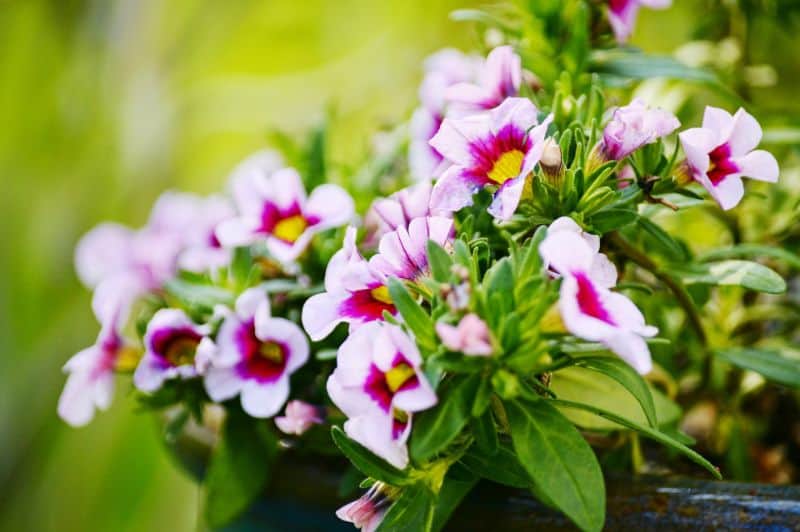
Calibrachoa, often referred to as “million bells,” is a vibrant and versatile plant that is well-suited for hanging baskets. These trailing plants produce an abundance of small, petunia-like flowers in a wide range of colors, including shades of red, pink, purple, yellow, and white, creating a cascading display that is both eye-catching and visually appealing.
One of the key advantages of calibrachoa in hanging baskets is its ability to thrive in full sun conditions. These plants require at least 6 hours of direct sunlight per day to maintain their best appearance, making them an excellent choice for areas that receive ample light.
Calibrachoa is also known for its heat and drought tolerance, making it a low-maintenance option for gardeners who may not have the time for frequent watering and care. However, it’s important to note that the plants do require consistent moisture to prevent the leaves and flowers from wilting and drooping.
To care for your calibrachoa in a hanging basket, be sure to plant it in a well-draining potting mix and water it regularly, keeping the soil consistently moist but not waterlogged. Deadheading spent blooms will encourage the plant to continue producing new flowers throughout the growing season, ensuring a long-lasting and vibrant display.
Begonia (Begonia spp.)

Begonias are a versatile and eye-catching choice for hanging baskets, offering a wide range of foliage and flower types to suit any gardener’s preferences. These plants come in both trailing and upright varieties, with some producing showy, waxy blooms and others showcasing their stunning, often colorful leaves.
One of the key advantages of begonias in hanging baskets is their ability to thrive in partially shaded to fully shaded conditions. These plants prefer cooler temperatures and can struggle in intense, direct sunlight, making them an excellent choice for gardeners with limited access to full sun.
Begonias are also known for their prolific blooming habit, producing an abundance of flowers throughout the growing season. With proper care and deadheading, these plants will continue to display their captivating blooms from spring through fall, providing a long-lasting and visually striking addition to your outdoor space.
To ensure the success of your begonias in a hanging basket, be sure to plant them in a well-draining potting mix and water them regularly, keeping the soil consistently moist but not waterlogged. Provide the plants with partial shade to full shade, and consider using a balanced, water-soluble fertilizer to support their growth and flowering.
Sweet Alyssum (Lobularia maritima)
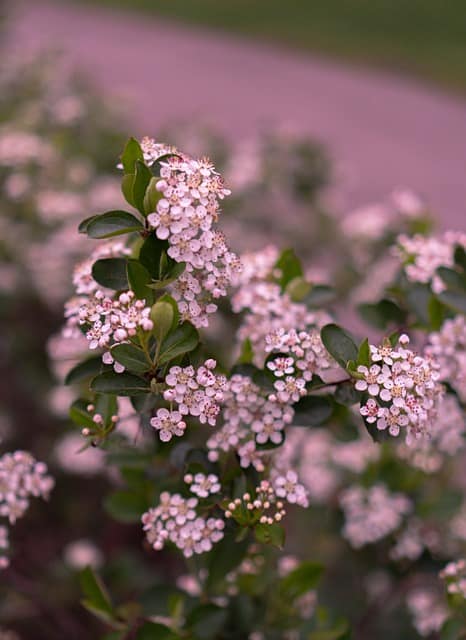
Sweet alyssum is a delicate and fragrant plant that is well-suited for hanging baskets, offering a cascading display of small, white or purple flowers that create a soft, cloud-like appearance.
One of the key benefits of sweet alyssum in hanging baskets is its ability to thrive in a wide range of light conditions, from full sun to partial shade. This versatility allows gardeners to incorporate these plants into a variety of hanging basket arrangements, ensuring that they can be enjoyed in both sunny and shaded areas.
Sweet alyssum is also known for its low-maintenance nature, requiring minimal care and attention to maintain its best appearance. These plants are relatively drought-tolerant and can bounce back quickly from periods of neglect, making them a great option for busy gardeners or those with limited time for frequent watering and care.
To care for your sweet alyssum in a hanging basket, be sure to plant it in a well-draining potting mix and water it regularly, keeping the soil consistently moist but not waterlogged. Deadheading spent blooms will encourage the plant to continue producing new flowers throughout the growing season, ensuring a long-lasting and fragrant display.
Moss Rose (Portulaca grandiflora)

Moss rose, also known as purslane, is a vibrant and low-growing plant that is well-suited for hanging baskets. These trailing plants produce an abundance of colorful, succulent-like flowers in shades of red, pink, yellow, and white, creating a cascading display that is both eye-catching and visually appealing.
One of the key advantages of moss rose in hanging baskets is its ability to thrive in full sun conditions. These plants require at least 6 hours of direct sunlight per day to maintain their best appearance, making them an excellent choice for areas that receive ample light.
Moss rose is also known for its heat and drought tolerance, making it a low-maintenance option for gardeners who may not have the time for frequent watering and care. These plants are able to store water in their fleshy leaves and stems, allowing them to withstand periods of dryness without wilting or drooping.
To care for your moss rose in a hanging basket, be sure to plant it in a well-draining potting mix and water it regularly, allowing the soil to dry out slightly between waterings. Deadheading spent blooms will encourage the plant to continue producing new flowers throughout the growing season, ensuring a long-lasting and vibrant display.
Lantana (Lantana camara)
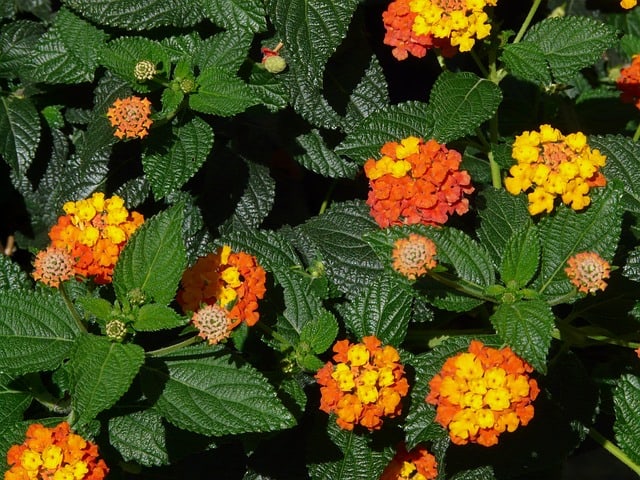
Lantana is a vibrant and versatile plant that is well-suited for hanging baskets, offering a stunning display of colorful, clustered flowers that attract a variety of pollinators, including butterflies and hummingbirds.
One of the key advantages of lantana in hanging baskets is its ability to thrive in full sun conditions. These plants require at least 6 hours of direct sunlight per day to maintain their best appearance, making them an excellent choice for areas that receive ample light.
Lantana is also known for its heat and drought tolerance, making it a low-maintenance option for gardeners who may not have the time for frequent watering and care. These plants are able to withstand periods of dryness without wilting or drooping, making them a resilient choice for hanging baskets.
To care for your lantana in a hanging basket, be sure to plant it in a well-draining potting mix and water it regularly, allowing the soil to dry out slightly between waterings. Deadheading spent blooms will encourage the plant to continue producing new flowers throughout the growing season, ensuring a long-lasting and vibrant display.
Geranium (Pelargonium x hortorum)
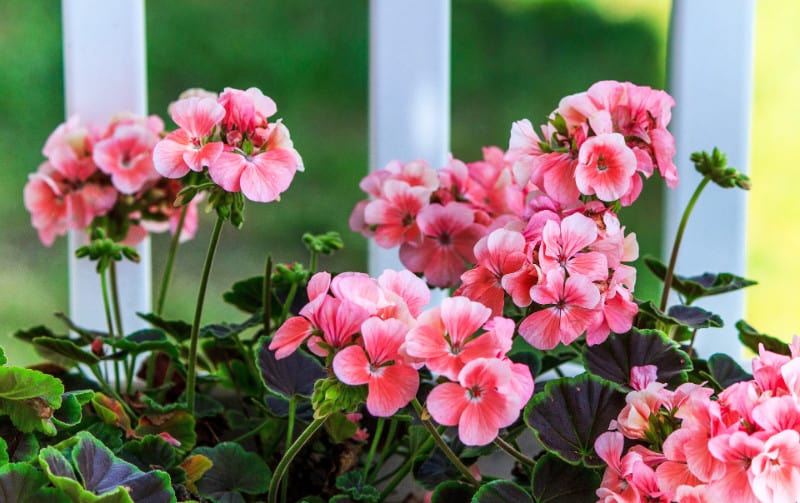
Geraniums are a classic and versatile choice for hanging baskets, offering a wide range of colors, forms, and bloom times to suit any gardener’s preferences. These plants produce clusters of showy, fragrant flowers in shades of red, pink, purple, and white, creating a visually striking addition to any outdoor space.
One of the key advantages of geraniums in hanging baskets is their ability to thrive in full sun conditions. These plants require at least 6 hours of direct sunlight per day to maintain their best appearance, making them an excellent choice for areas that receive ample light.
Geraniums are also known for their resilience and low-maintenance requirements. These plants are relatively drought-tolerant and can bounce back quickly from periods of neglect, making them a great option for busy gardeners or those with limited time for frequent watering and care.
To ensure the success of your geraniums in a hanging basket, be sure to plant them in a well-draining potting mix and water them regularly, allowing the soil to dry out slightly between waterings. Deadheading spent blooms will encourage the plant to continue producing new flowers throughout the season, ensuring a long-lasting and vibrant display.
Asparagus Fern (Asparagus densiflorus ‘Sprengeri’)
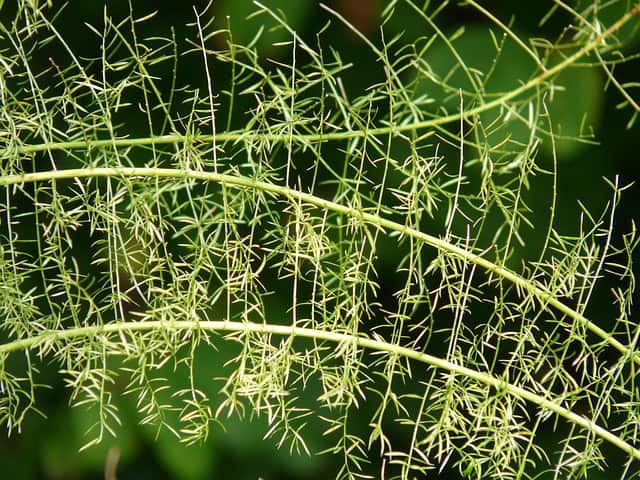
Asparagus fern, also known as Sprenger’s asparagus, is a lush and trailing plant that is well-suited for hanging baskets. These plants feature delicate, feathery foliage that cascades gracefully over the sides of the container, creating a soft and airy display.
One of the key advantages of asparagus fern in hanging baskets is its ability to thrive in a wide range of light conditions, from partial shade to full sun. While these plants prefer bright, indirect light, they can also tolerate some direct sunlight, making them a versatile choice for gardeners with varying light conditions.
Asparagus fern is also known for its low-maintenance nature, requiring minimal care and attention to maintain its best appearance. These plants are relatively drought-tolerant and can bounce back quickly from periods of neglect, making them a great option for busy gardeners or those with limited time for frequent watering and care.
To care for your asparagus fern in a hanging basket, be sure to plant it in a well-draining potting mix and water it regularly, keeping the soil consistently moist but not waterlogged. Avoid exposing the plant to intense, direct sunlight, as this can cause the foliage to become discolored or damaged.
Ferns (Polypodiopsida)
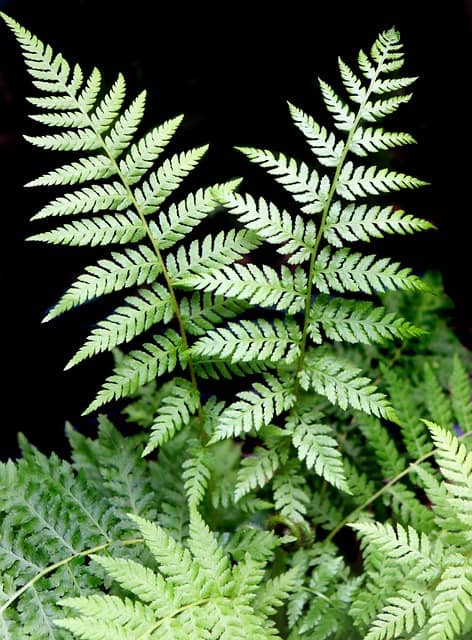
Ferns are a captivating and versatile choice for hanging baskets, offering a wide range of shapes, sizes, and textures to suit any gardener’s preferences. From the delicate, lace-like fronds of the maidenhair fern to the bold, architectural forms of the bird’s nest fern, these plants can add a touch of elegance and sophistication to any outdoor space.
One of the key advantages of ferns in hanging baskets is their ability to thrive in partially shaded to fully shaded conditions. These plants prefer cooler temperatures and can struggle in intense, direct sunlight, making them an excellent choice for gardeners with limited access to full sun.
Ferns are also known for their low-maintenance nature, requiring minimal care and attention to maintain their best appearance. These plants are relatively drought-tolerant and can bounce back quickly from periods of neglect, making them a great option for busy gardeners or those with limited time for frequent watering and care.
To care for your ferns in a hanging basket, be sure to plant them in a well-draining potting mix and water them regularly, keeping the soil consistently moist but not waterlogged. Provide the plants with partial shade to full shade, and consider using a balanced, water-soluble fertilizer to support their growth and development.
Golden Pothos (Epipremnum aureum)

Golden pothos, also known as devil’s ivy, is a trailing and versatile plant that is well-suited for hanging baskets. These plants feature lush, heart-shaped leaves that can range in color from bright, golden-yellow to deep, variegated green, creating a visually striking and eye-catching display.
One of the key advantages of golden pothos in hanging baskets is its ability to thrive in a wide range of light conditions, from partial shade to bright, indirect light. While these plants prefer bright, indirect light, they can also tolerate some direct sunlight, making them a flexible choice for gardeners with varying light conditions.
Golden pothos is also known for its low-maintenance nature, requiring minimal care and attention to maintain its best appearance. These plants are relatively drought-tolerant and can bounce back quickly from periods of neglect, making them a great option for busy gardeners or those with limited time for frequent watering and care.
To care for your golden pothos in a hanging basket, be sure to plant it in a well-draining potting mix and water it regularly, keeping the soil consistently moist but not waterlogged. Avoid exposing the plant to intense, direct sunlight, as this can cause the leaves to become discolored or damaged.
String of Pearls (Curio rowleyanus)
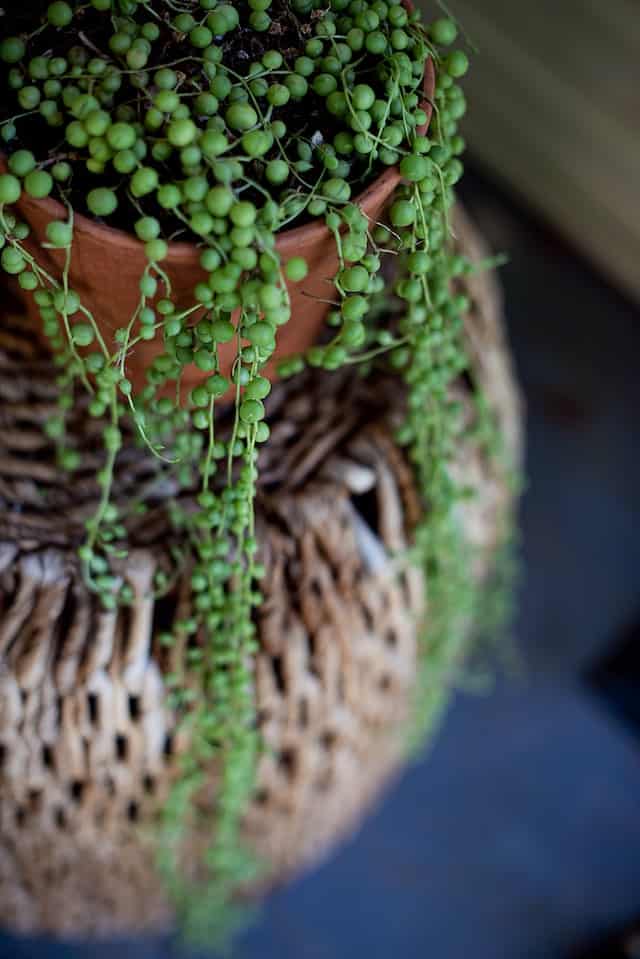
String of pearls, also known as string of beads, is a captivating and unique trailing plant that is well-suited for hanging baskets. These plants feature delicate, bead-like leaves that cascade gracefully over the sides of the container, creating a whimsical and eye-catching display.
One of the key advantages of string of pearls in hanging baskets is its ability to thrive in bright, indirect light. These plants prefer a location that receives several hours of direct sunlight per day, but they can also tolerate some partial shade, making them a versatile choice for gardeners with varying light conditions.
String of pearls is also known for its low-maintenance nature, requiring minimal care and attention to maintain its best appearance. These plants are relatively drought-tolerant and can bounce back quickly from periods of neglect, making them a great option for busy gardeners or those with limited time for frequent watering and care.
To care for your string of pearls in a hanging basket, be sure to plant it in a well-draining potting mix and water it regularly, allowing the soil to dry out slightly between waterings. Avoid exposing the plant to intense, direct sunlight, as this can cause the leaves to become discolored or damaged.
Dichondra ‘Silver Falls’ (Dichondra argentea ‘Silver Falls’)
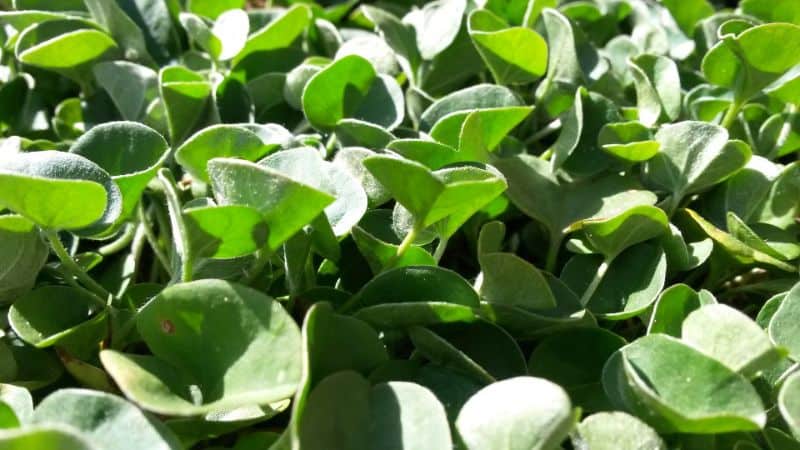
Dichondra ‘Silver Falls,’ also known as silver nickel vine, is a stunning and trailing plant that is well-suited for hanging baskets. These plants feature delicate, silver-gray leaves that cascade gracefully over the sides of the container, creating a visually striking and eye-catching display.
One of the key advantages of Dichondra ‘Silver Falls’ in hanging baskets is its ability to thrive in a wide range of light conditions, from partial shade to full sun. While these plants prefer bright, indirect light, they can also tolerate some direct sunlight, making them a flexible choice for gardeners with varying light conditions.
Dichondra ‘Silver Falls’ is also known for its low-maintenance nature, requiring minimal care and attention to maintain its best appearance. These plants are relatively drought-tolerant and can bounce back quickly from periods of neglect, making them a great option for busy gardeners or those with limited time for frequent watering and care.
To care for your Dichondra ‘Silver Falls’ in a hanging basket, be sure to plant it in a well-draining potting mix and water it regularly, allowing the soil to dry out slightly between waterings. Avoid exposing the plant to intense, direct sunlight, as this can cause the leaves to become discolored or damaged.
Osteospermum (Osteospermum ecklonis)

Osteospermum, also known as African daisy, is a vibrant and eye-catching plant that is well-suited for hanging baskets. These plants produce an abundance of daisy-like flowers in a wide range of colors, including shades of white, pink, purple, and yellow, creating a captivating and visually striking display.
One of the key advantages of osteospermum in hanging baskets is its ability to thrive in full sun conditions. These plants require at least 6 hours of direct sunlight per day to maintain their best appearance, making them an excellent choice for areas that receive ample light.
Osteospermum is also known for its heat and drought tolerance, making it a low-maintenance option for gardeners who may not have the time for frequent watering and care. These plants are able to withstand periods of dryness without wilting or drooping, ensuring a long-lasting and vibrant display.
To care for your osteospermum in a hanging basket, be sure to plant it in a well-draining potting mix and water it regularly, allowing the soil to dry out slightly between waterings. Deadheading spent blooms will encourage the plant to continue producing new flowers throughout the growing season, ensuring a long-lasting and captivating display.
Fountain Grass (Pennisetum spp.)

Fountain grass is a graceful and eye-catching addition to hanging baskets, offering a unique and textural element that can complement a wide range of other plants. These ornamental grasses feature slender, arching foliage and delicate, feathery plumes that cascade over the sides of the container, creating a soft and airy display.
One of the key advantages of fountain grass in hanging baskets is its ability to thrive in full sun conditions. These plants require at least 6 hours of direct sunlight per day to maintain their best appearance, making them an excellent choice for areas that receive ample light.
Fountain grass is also known for its low-maintenance nature, requiring minimal care and attention to maintain its best appearance. These plants are relatively drought-tolerant and can bounce back quickly from periods of neglect, making them a great option for busy gardeners or those with limited time for frequent watering and care.
To care for your fountain grass in a hanging basket, be sure to plant it in a well-draining potting mix and water it regularly, allowing the soil to dry out slightly between waterings. Avoid exposing the plant to intense, direct sunlight, as this can cause the foliage to become discolored or damaged.
Dwarf Morning Glory
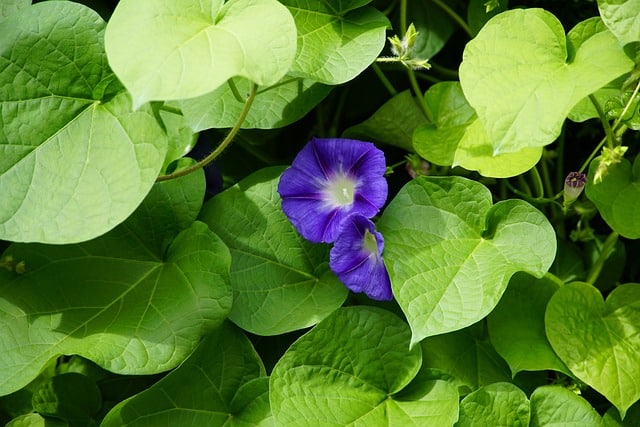
Dwarf morning glory is a charming and trailing plant that is well-suited for hanging baskets, offering a delicate and eye-catching display of colorful, trumpet-shaped flowers.
One of the key advantages of dwarf morning glory in hanging baskets is its ability to thrive in full sun conditions. These plants require at least 6 hours of direct sunlight per day to maintain their best appearance, making them an excellent choice for areas that receive ample light.
Dwarf morning glory is also known for its prolific blooming, producing a continuous display of flowers throughout the growing season. These plants are relatively low-maintenance, requiring minimal care and attention to maintain their best appearance.
To care for your dwarf morning glory in a hanging basket, be sure to plant it in a well-draining potting mix and water it regularly, allowing the soil to dry out slightly between waterings. Deadheading spent blooms will encourage the plant to continue producing new flowers, ensuring a long-lasting and vibrant display.
Heuchera

Heuchera, also known as coral bells, is a versatile and eye-catching plant that can be a stunning addition to hanging baskets. These plants feature a wide range of foliage colors, from deep burgundy to vibrant lime green, creating a visually striking and textural display.
One of the key advantages of heuchera in hanging baskets is its ability to thrive in partial shade to full shade conditions. These plants prefer a location that receives some afternoon shade, making them an excellent choice for gardeners with limited access to full sun.
Heuchera is also known for its low-maintenance nature, requiring minimal care and attention to maintain its best appearance. These plants are relatively drought-tolerant and can bounce back quickly from periods of neglect, making them a great option for busy gardeners or those with limited time for frequent watering and care.
To care for your heuchera in a hanging basket, be sure to plant it in a well-draining potting mix and water it regularly, allowing the soil to dry out slightly between waterings. Avoid exposing the plant to intense, direct sunlight, as this can cause the foliage to become discolored or damaged.
Sweet Potato Vine (Ipomoea batatas)
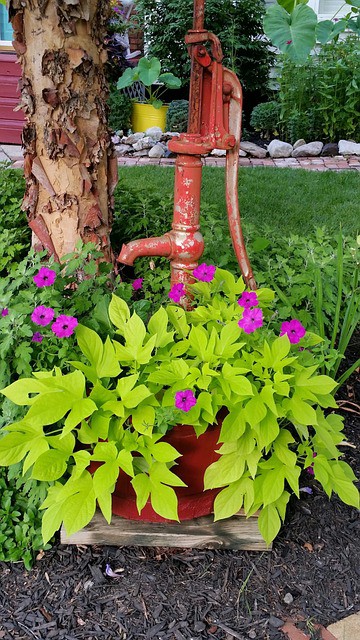
Sweet potato vine is a versatile and eye-catching trailing plant that is well-suited for hanging baskets. These plants feature vibrant, heart-shaped leaves that come in a range of colors, including chartreuse, purple, and variegated varieties, creating a visually striking and textural display.
One of the key advantages of sweet potato vine in hanging baskets is its ability to thrive in a wide range of light conditions, from partial shade to full sun. While these plants prefer bright, indirect light, they can also tolerate some direct sunlight, making them a flexible choice for gardeners with varying light conditions.
Sweet potato vine is also known for its fast-growing and trailing habit, quickly cascading over the sides of the container and creating a lush, abundant display. These plants are relatively low-maintenance, requiring minimal care and attention to maintain their best appearance.
To care for your sweet potato vine in a hanging basket, be sure to plant it in a well-draining potting mix and water it regularly, allowing the soil to dry out slightly between waterings. Avoid exposing the plant to intense, direct sunlight, as this can cause the leaves to become discolored or damaged.
Strawberries (Fragaria spp.)
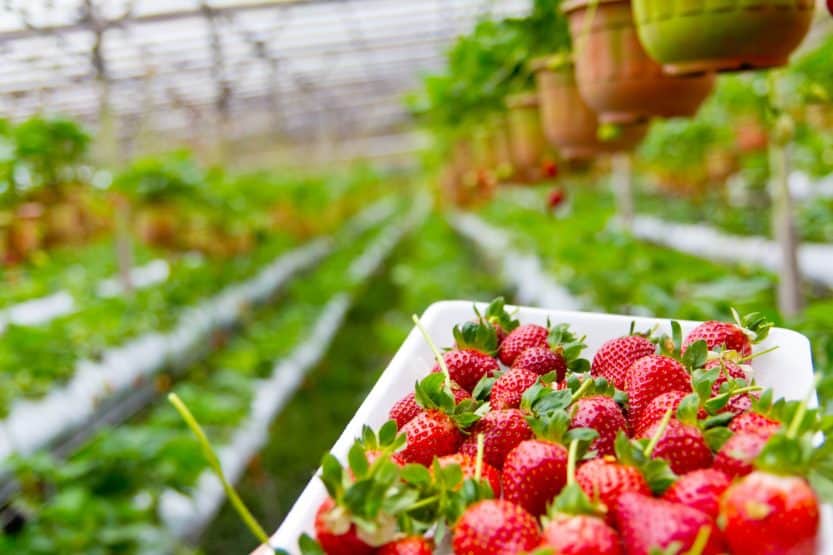
Strawberries are a delightful and unexpected addition to hanging baskets, offering the opportunity to grow a delicious and nutritious fruit in a compact and space-saving container.
One of the key advantages of growing strawberries in hanging baskets is their ability to thrive in full sun conditions. These plants require at least 6 hours of direct sunlight per day to produce the best fruit, making them an excellent choice for areas that receive ample light.
Strawberries are also known for their compact and trailing growth habit, making them well-suited for hanging baskets. These plants will produce runners that cascade over the sides of the container, creating a lush and abundant display.
To care for your strawberries in a hanging basket, be sure to plant them in a well-draining potting mix and water them regularly, keeping the soil consistently moist but not waterlogged. Fertilize the plants regularly with a balanced, water-soluble fertilizer to support their growth and fruit production.
Boston Fern (Nephrolepis exaltata)
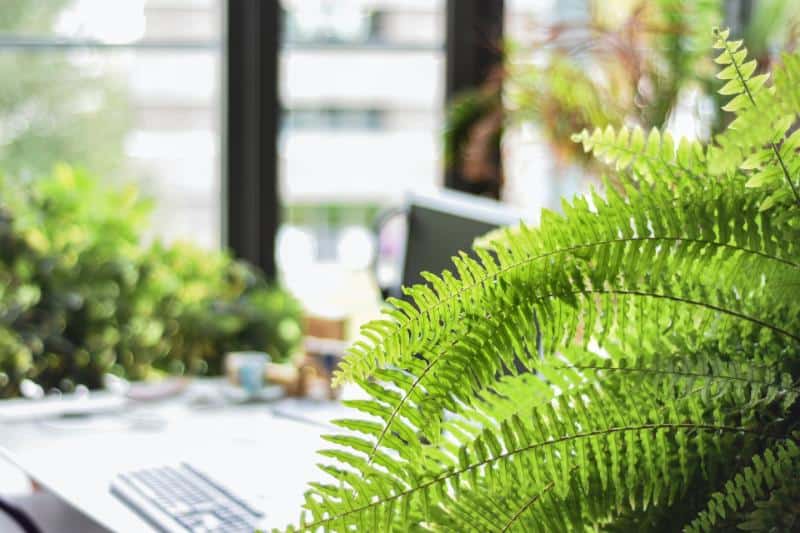
Boston fern is a classic and timeless choice for hanging baskets, offering a lush and elegant display of cascading, feathery fronds.
One of the key advantages of Boston fern in hanging baskets is its ability to thrive in partial shade to full shade conditions. These plants prefer a location that receives some afternoon shade, making them an excellent choice for gardeners with limited access to full sun.
Boston fern is also known for its low-maintenance nature, requiring minimal care and attention to maintain its best appearance. These plants are relatively drought-tolerant and can bounce back quickly from periods of neglect, making them a great option for busy gardeners or those with limited time for frequent watering and care.
To care for your Boston fern in a hanging basket, be sure to plant it in a well-draining potting mix and water it regularly, keeping the soil consistently moist but not waterlogged. Avoid exposing the plant to intense, direct sunlight, as this can cause the fronds to become discolored or damaged.


